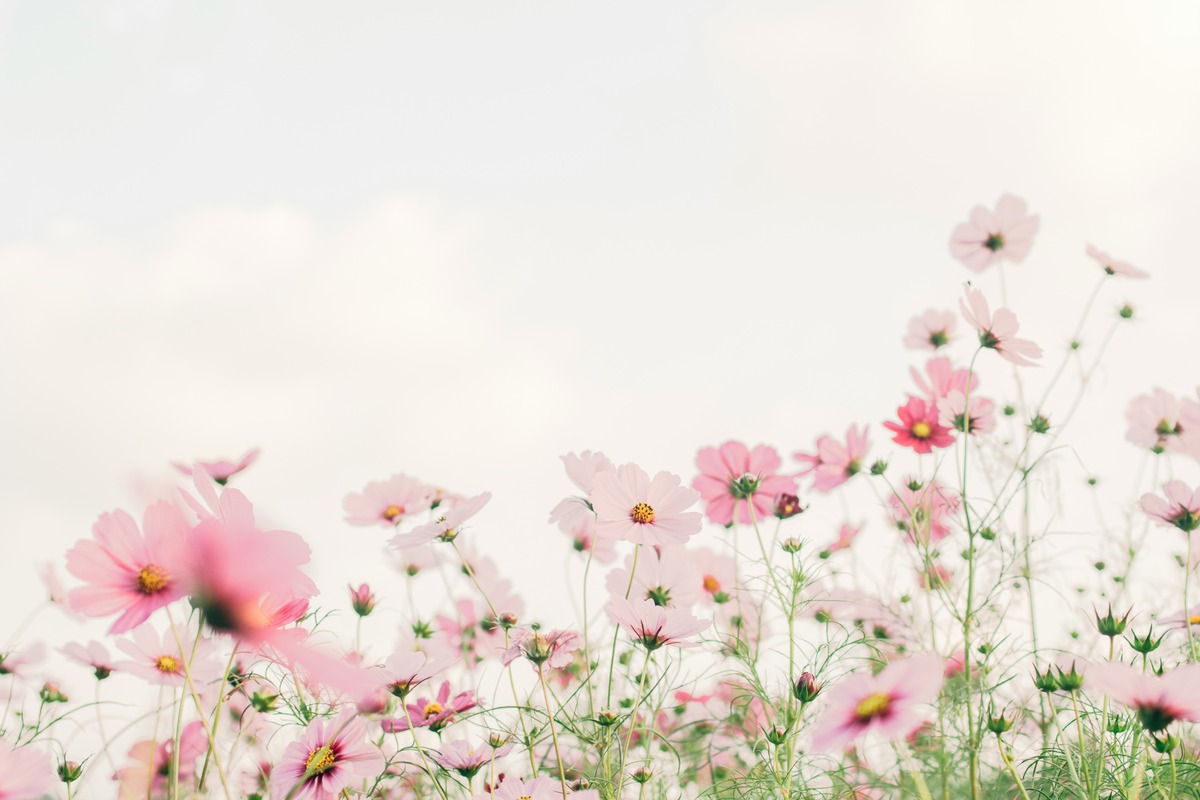

Lifestyle
10 Beautiful Pink Flowers You Need To Know
Published: January 29, 2024
Discover the top 10 stunning pink flowers to enhance your lifestyle. Explore the beauty and elegance of these vibrant blooms today.
(Many of the links in this article redirect to a specific reviewed product. Your purchase of these products through affiliate links helps to generate commission for Noodls.com, at no extra cost. Learn more)
Table of Contents
Introduction
Pink flowers are universally adored for their delicate beauty and charming symbolism. Whether they are adorning a garden, brightening up a bouquet, or serving as a thoughtful gift, these blooms never fail to captivate with their soft, romantic hues. From the enchanting peony to the graceful cherry blossom, the world of pink flowers is a testament to nature's artistry and the diversity of floral beauty.
In this article, we will embark on a journey through ten stunning pink flowers that are sure to leave a lasting impression. Each of these blossoms possesses its own unique characteristics, historical significance, and cultural symbolism, making them a delightful subject of fascination for flower enthusiasts and nature lovers alike.
Join us as we delve into the enchanting world of pink flowers, exploring their captivating allure and the myriad ways in which they have woven themselves into the tapestry of human experience. Whether you seek inspiration for your garden, a deeper understanding of floral symbolism, or simply a moment of aesthetic appreciation, these ten beautiful pink flowers are certain to leave you awestruck with their timeless elegance and grace.
Peony
The peony, with its lush layers of silky petals and captivating fragrance, stands as a timeless emblem of romance and prosperity. Revered for centuries in Eastern cultures, this majestic bloom has become a beloved symbol of beauty, honor, and good fortune. Its opulent appearance and enchanting fragrance have earned it a revered status in the world of floristry and garden design.
The peony, scientifically known as Paeonia, is native to Asia, Europe, and North America, with its cultural significance deeply rooted in Chinese history. In China, the peony is hailed as the "king of flowers" and is esteemed for its association with wealth, honor, and feminine beauty. Renowned for its large, showy blooms and lush foliage, the peony has been immortalized in art, poetry, and literature, symbolizing prosperity, good fortune, and a blissful marriage.
This perennial plant comes in a spectrum of captivating pink shades, from delicate pastels to vibrant hues, making it a cherished choice for weddings, celebrations, and ornamental gardens. The peony's ability to thrive in diverse climates and its longevity as a cut flower have further solidified its status as a beloved floral icon.
Beyond its aesthetic allure, the peony is also celebrated for its medicinal properties, as its roots have been used in traditional Chinese medicine for centuries to alleviate various ailments. This multifaceted flower continues to inspire artists, poets, and garden enthusiasts, evoking a sense of opulence, grace, and timeless beauty.
As a perennial favorite among gardeners and floral enthusiasts, the peony has earned a place of honor in botanical gardens, wedding bouquets, and landscape designs worldwide. Its enduring appeal and rich cultural symbolism make it a cherished emblem of love, prosperity, and natural splendor, ensuring that the peony remains a beloved treasure for generations to come.
Cherry Blossom
The cherry blossom, or sakura in Japanese, holds a revered status in the realm of pink flowers, captivating hearts with its ethereal beauty and profound cultural significance. Each spring, these delicate blooms grace the landscapes of Japan, painting the scenery in a breathtaking wash of pale pink and white. The fleeting nature of cherry blossoms, symbolizing the transient beauty of life, has inspired centuries of admiration and contemplation, making them an iconic emblem of renewal, hope, and the ephemeral nature of existence.
Scientifically known as Prunus serrulata, the cherry blossom is native to East Asia and has become an enduring symbol of Japanese culture and identity. The annual blooming of cherry blossoms, known as hanami, is a cherished tradition in Japan, drawing locals and visitors alike to revel in the exquisite display of nature's splendor. The delicate, five-petaled flowers, borne on slender branches, create a mesmerizing spectacle, inviting contemplation and reverence for the fleeting beauty of life.
The symbolism of cherry blossoms extends beyond their aesthetic allure, embodying profound themes of renewal, impermanence, and the ephemeral nature of existence. In Japanese culture, the sakura holds deep cultural and philosophical significance, representing the transient nature of life and the fleeting beauty that graces our world. This poignant symbolism is reflected in various art forms, literature, and traditional practices, serving as a poignant reminder of the transient yet profound nature of human experience.
Beyond Japan, the allure of cherry blossoms has transcended borders, captivating hearts around the world and inspiring countless works of art, poetry, and cultural celebrations. The annual cherry blossom festivals in various countries pay homage to the beauty and symbolism of these delicate blooms, fostering a sense of unity and appreciation for nature's fleeting yet profound gifts.
Whether admired in the tranquil settings of a Japanese garden or celebrated in vibrant festivals across the globe, the cherry blossom continues to enchant and inspire, evoking a sense of wonder, gratitude, and contemplation. Its delicate yet resilient nature serves as a poignant reminder of life's ephemeral beauty, inviting us to cherish each fleeting moment and find solace in the ever-renewing cycle of nature.
The cherry blossom's timeless allure and profound symbolism ensure that it will remain a cherished emblem of natural beauty, cultural heritage, and the transient yet enduring essence of life.
Rose
The rose, often hailed as the "queen of flowers," stands as an enduring symbol of love, beauty, and timeless elegance. With its captivating fragrance and exquisite petals, the rose has woven itself into the fabric of human culture, captivating hearts and inspiring countless expressions of affection and admiration.
Scientifically known as Rosa, this beloved flower boasts a rich history dating back thousands of years, with its origins tracing back to ancient civilizations in Asia, Europe, and the Middle East. The diverse species of roses, ranging from the classic hybrid tea roses to the wild and rambling varieties, have captivated gardeners and floral enthusiasts with their unparalleled beauty and captivating fragrance.
The symbolism of the rose transcends cultural boundaries, embodying themes of love, passion, and emotional depth. Across different societies and historical periods, the rose has been revered as a timeless emblem of romance, beauty, and heartfelt sentiments. Its association with love and affection has made it a perennial favorite for expressing heartfelt emotions, whether in the form of a single red rose or a lavish bouquet of assorted hues.
The enchanting palette of rose colors, including delicate shades of pink, vibrant reds, and soft pastels, offers a myriad of options for conveying specific emotions and sentiments. Pink roses, in particular, symbolize grace, admiration, and gratitude, making them a cherished choice for expressing appreciation and affection.
Beyond its symbolic significance, the rose holds practical value in various industries, including perfumery, culinary arts, and herbal medicine. The intoxicating fragrance of rose essential oil has been coveted for centuries, infusing perfumes, skincare products, and aromatherapy blends with its alluring scent. In culinary arts, rose petals are used to create delicately flavored teas, confections, and garnishes, adding a touch of elegance to culinary creations.
In herbal medicine, roses are esteemed for their therapeutic properties, with rose water and rose essential oil being utilized for their soothing and rejuvenating effects. The rose's petals and hips are also valued for their nutritional and medicinal benefits, making them a versatile and valuable botanical resource.
As a garden favorite, the rose continues to enchant with its diverse forms, from sprawling climbers to compact shrub roses, offering an array of options for landscape designs and floral arrangements. Its enduring popularity and timeless allure ensure that the rose remains a cherished symbol of love, beauty, and emotional depth, enriching both natural landscapes and human experiences with its exquisite presence.
Azalea
The azalea, with its vibrant blooms and lush, evergreen foliage, stands as a captivating symbol of beauty and resilience in the world of pink flowers. This stunning flowering shrub, belonging to the Rhododendron genus, has enchanted gardeners and nature enthusiasts for centuries with its stunning floral displays and versatile cultivars.
Native to Asia, Europe, and North America, the azalea has become a beloved ornamental plant, adorning gardens, parks, and landscapes with its profusion of blossoms in various shades of pink, ranging from delicate pastels to rich, vibrant hues. The azalea's exquisite flowers, characterized by their trumpet-like shape and intricate patterns, create a breathtaking spectacle during the spring and summer months, infusing natural settings with a sense of vibrancy and charm.
One of the most remarkable qualities of the azalea is its adaptability to diverse climates and soil conditions, making it a versatile and resilient addition to garden landscapes. From compact, dwarf varieties suitable for container gardening to sprawling, deciduous cultivars ideal for woodland settings, the azalea offers a wealth of options for horticultural enthusiasts seeking to enhance their outdoor spaces with a burst of color and natural elegance.
Beyond its ornamental appeal, the azalea holds cultural significance in various societies, symbolizing diverse themes such as femininity, abundance, and the arrival of spring. In Japanese culture, the azalea is revered as a symbol of womanhood and is celebrated during the Tsutsuji Matsuri, or Azalea Festival, where the stunning blooms take center stage in vibrant festivities and traditional performances.
The azalea's enduring popularity and cultural significance have also inspired hybridization efforts, leading to the development of countless cultivars with diverse flower forms, sizes, and bloom times. From the ever-popular Kurume azaleas to the elegant Southern Indica hybrids, these cultivated varieties offer a kaleidoscope of pink hues, from pale blush tones to intense magentas, catering to a wide range of aesthetic preferences and gardening styles.
As a resilient and versatile ornamental plant, the azalea continues to captivate with its stunning floral displays, adding a touch of natural splendor to gardens, parks, and landscapes worldwide. Its enduring allure and rich cultural symbolism ensure that the azalea remains a cherished emblem of natural beauty, resilience, and the timeless charm of pink flowers.
Tulip
The tulip, with its graceful silhouette and vibrant petals, holds a revered status as a timeless symbol of elegance and natural splendor. Originating from Central Asia and later gaining prominence in the Netherlands, the tulip has captivated hearts with its diverse range of colors, delicate blooms, and rich cultural significance.
Scientifically known as Tulipa, this beloved flower boasts a rich history dating back centuries, with its origins intertwined with tales of exploration, trade, and horticultural fascination. The tulip's journey from its native regions to the tulip mania in 17th-century Holland has solidified its status as a cherished emblem of beauty, refinement, and artistic inspiration.
The allure of tulips lies in their captivating diversity, encompassing an extensive array of colors, including enchanting shades of pink, from soft blush tones to vibrant magentas. These captivating hues, combined with the tulip's graceful form and exquisite petals, have made it a perennial favorite for gardeners, floral designers, and admirers of natural beauty.
The symbolism of the tulip extends beyond its aesthetic appeal, embodying themes of love, passion, and the arrival of spring. In various cultures, tulips have been revered as symbols of prosperity, abundance, and new beginnings, making them a cherished choice for celebrations, festive occasions, and expressions of heartfelt sentiments.
The tulip's enduring popularity and cultural significance have also inspired extensive hybridization efforts, resulting in an astonishing array of tulip varieties, each boasting its own unique characteristics and visual allure. From the classic single-flowered tulips to the elegant parrot tulips and fringed tulips, the diversity of tulip cultivars offers an enchanting tapestry of pink hues, captivating gardeners and floral enthusiasts with their exquisite charm.
As a beloved symbol of spring and natural beauty, the tulip continues to enchant with its vibrant displays, adorning gardens, parks, and landscapes with a burst of color and timeless elegance. Its enduring allure and rich cultural symbolism ensure that the tulip remains a cherished emblem of grace, refinement, and the enduring beauty of pink flowers.
Camellia
The camellia, renowned for its exquisite blooms and evergreen foliage, stands as a timeless symbol of grace, beauty, and resilience in the realm of pink flowers. Belonging to the genus Camellia, this captivating flowering plant has captured the hearts of gardeners, floral enthusiasts, and artists with its captivating allure and rich cultural significance.
Native to East Asia, the camellia has been revered for centuries in regions such as China and Japan, where it holds deep cultural and symbolic significance. The camellia's elegant blooms, characterized by their symmetrical form and lush, glossy foliage, have earned it a revered status in the world of horticulture and floral arts. The captivating beauty of the camellia has inspired countless artistic expressions, from traditional paintings and ceramics to modern-day floral arrangements and botanical illustrations.
One of the most remarkable qualities of the camellia is its resilience and adaptability, thriving in diverse climates and soil conditions. From the classic Camellia japonica to the delicate Camellia sasanqua, this diverse genus offers a wealth of options for gardeners seeking to enhance their outdoor spaces with a touch of natural splendor. The camellia's ability to bloom during the cooler months, when few other flowers are in bloom, adds to its allure and makes it a cherished emblem of winter beauty and resilience.
The symbolism of the camellia extends beyond its ornamental appeal, embodying themes of purity, longevity, and heartfelt admiration. In Japanese culture, the camellia, known as "tsubaki," is celebrated for its association with the divine and is revered as a symbol of devotion and gratitude. The camellia's enchanting blooms have been immortalized in traditional art forms and literature, serving as a poignant emblem of natural beauty and emotional depth.
The diverse range of camellia cultivars, featuring an enchanting spectrum of pink hues, from delicate blush tones to vibrant magentas, offers a myriad of options for creating stunning floral displays and ornamental landscapes. Whether adorning a serene garden setting or serving as a focal point in floral arrangements, the camellia continues to enchant with its timeless elegance and captivating presence.
As a beloved symbol of beauty and resilience, the camellia remains a cherished emblem of grace, natural splendor, and the enduring allure of pink flowers. Its captivating blooms and rich cultural symbolism ensure that the camellia holds a revered place in the hearts of nature enthusiasts and admirers of floral beauty worldwide.
Orchid
The orchid, with its mesmerizing blooms and unparalleled diversity, stands as a revered symbol of elegance, beauty, and exotic allure in the world of pink flowers. Belonging to one of the largest and most diverse plant families, Orchidaceae, this enchanting flowering plant has captivated the hearts of horticulturists, botanists, and floral enthusiasts with its captivating allure and rich cultural significance.
Originating from diverse habitats across the globe, orchids have evolved to thrive in a myriad of environments, ranging from tropical rainforests to arid deserts, showcasing an astonishing array of shapes, sizes, and colors. The captivating beauty of orchids has inspired fascination and admiration for centuries, leading to extensive hybridization efforts and the development of countless cultivars, each boasting its own unique characteristics and visual allure.
The symbolism of orchids transcends cultural boundaries, embodying themes of refinement, luxury, and rare beauty. In various societies, orchids have been revered as symbols of love, elegance, and artistic inspiration, making them a cherished choice for ornamental gardens, floral arrangements, and botanical exhibitions. The exquisite blooms of orchids, characterized by their intricate patterns and delicate hues, create a mesmerizing spectacle, inviting contemplation and reverence for the wonders of the natural world.
The diverse range of orchid species and hybrids, featuring an enchanting spectrum of pink tones, from soft pastels to vibrant fuchsias, offers a myriad of options for creating stunning floral displays and ornamental landscapes. Whether showcased in botanical gardens, adorning elegant events, or serving as prized collectibles for enthusiasts, orchids continue to enchant with their timeless elegance and captivating presence.
As a beloved symbol of exotic beauty and natural splendor, orchids remain a cherished emblem of grace, refinement, and the enduring allure of pink flowers. Their captivating blooms and rich cultural symbolism ensure that orchids hold a revered place in the hearts of nature enthusiasts and admirers of floral beauty worldwide.
Hydrangea
The hydrangea, with its voluminous clusters of delicate flowers and robust, verdant foliage, stands as a captivating emblem of grace and abundance in the enchanting world of pink flowers. Belonging to the Hydrangeaceae family, this beloved flowering shrub has captured the hearts of gardeners and floral enthusiasts with its captivating allure and rich cultural significance.
Native to Asia and the Americas, hydrangeas have become a beloved ornamental plant, adorning gardens, parks, and landscapes with their profusion of blossoms in various shades of pink, ranging from pale blush to deep rose hues. The exquisite flowers of hydrangeas, characterized by their intricate inflorescences and striking color variations, create a breathtaking spectacle during the spring and summer months, infusing natural settings with a sense of vibrancy and charm.
One of the most remarkable qualities of hydrangeas is their versatility and adaptability to diverse growing conditions, making them a resilient and cherished addition to garden landscapes. From the classic mophead hydrangeas to the delicate lacecap varieties, this diverse genus offers a wealth of options for horticultural enthusiasts seeking to enhance their outdoor spaces with a burst of color and natural elegance. The ability of hydrangeas to thrive in different soil types and climates further adds to their allure, making them a versatile and beloved choice for gardeners around the world.
The symbolism of hydrangeas extends beyond their ornamental appeal, embodying themes of gratitude, heartfelt emotions, and the abundance of nature. In various cultures, hydrangeas have been revered as symbols of gratitude, understanding, and heartfelt emotions, making them a cherished choice for celebrations, festive occasions, and expressions of appreciation. The captivating beauty and lush, bountiful blooms of hydrangeas evoke a sense of abundance and natural splendor, enriching both natural landscapes and human experiences with their exquisite presence.
The enduring popularity and rich cultural symbolism of hydrangeas ensure that they remain a cherished emblem of natural beauty, resilience, and the timeless charm of pink flowers. Their captivating blooms and lush foliage continue to enchant with their stunning displays, adding a touch of grace and abundance to gardens, parks, and landscapes worldwide, evoking a sense of wonder and appreciation for the bountiful gifts of nature.
Magnolia
The magnolia, with its majestic blossoms and timeless elegance, stands as a revered symbol of beauty, resilience, and natural splendor in the enchanting world of pink flowers. Belonging to the magnolia genus, this captivating flowering plant has captivated the hearts of gardeners, nature enthusiasts, and artists with its captivating allure and rich cultural significance.
Native to East Asia, the Americas, and the southeastern United States, magnolias have become beloved ornamental trees, adorning landscapes, parks, and botanical gardens with their breathtaking displays of blossoms in various shades of pink, from delicate blush hues to vibrant magentas. The exquisite flowers of magnolias, characterized by their large, waxy petals and intoxicating fragrance, create a mesmerizing spectacle during the spring and summer months, infusing natural settings with a sense of grandeur and charm.
One of the most remarkable qualities of magnolias is their timelessness and adaptability to diverse growing conditions, making them a resilient and cherished addition to garden landscapes. From the classic Southern magnolias with their iconic, large blossoms to the delicate saucer magnolias and star magnolias, this diverse genus offers a wealth of options for horticultural enthusiasts seeking to enhance their outdoor spaces with a touch of natural splendor. The ability of magnolias to thrive in various soil types and climates further adds to their allure, making them a versatile and beloved choice for gardeners around the world.
The symbolism of magnolias extends beyond their ornamental appeal, embodying themes of purity, dignity, and the enduring spirit of nature. In various cultures, magnolias have been revered as symbols of nobility, perseverance, and the enduring beauty of the natural world, making them a cherished choice for celebrations, festive occasions, and expressions of admiration. The captivating beauty and regal presence of magnolias evoke a sense of grandeur and timeless elegance, enriching both natural landscapes and human experiences with their exquisite presence.
The enduring popularity and rich cultural symbolism of magnolias ensure that they remain a cherished emblem of natural beauty, resilience, and the timeless allure of pink flowers. Their captivating blooms and lush foliage continue to enchant with their stunning displays, adding a touch of grandeur and natural splendor to gardens, parks, and landscapes worldwide, evoking a sense of wonder and appreciation for the enduring gifts of nature.
Bleeding Heart
The Bleeding Heart, scientifically known as Dicentra spectabilis, emerges as a captivating symbol of grace and emotional depth in the enchanting realm of pink flowers. Native to Asia and North America, this perennial herbaceous plant has captured the hearts of gardeners, floral enthusiasts, and nature lovers with its exquisite heart-shaped blooms and rich cultural significance.
The Bleeding Heart's distinctive flowers, resembling delicate, dangling hearts in shades of pink and white, create a mesmerizing spectacle during the spring, infusing natural settings with a sense of whimsy and romantic allure. These enchanting blooms, borne on arching stems adorned with fern-like foliage, evoke a sense of nostalgia and emotional resonance, captivating admirers with their evocative symbolism.
Beyond its ornamental appeal, the Bleeding Heart holds profound cultural significance, embodying themes of love, compassion, and the enduring nature of emotions. The unique form and delicate hues of its blooms have inspired diverse interpretations and artistic expressions, from traditional folklore and poetry to contemporary botanical illustrations, making it a cherished motif in the realm of floral symbolism.
One of the most remarkable qualities of the Bleeding Heart is its ability to thrive in shaded woodland settings, adding a touch of natural elegance and grace to garden landscapes. Its resilience and adaptability to varying soil conditions further enhance its appeal, making it a beloved choice for gardeners seeking to create enchanting, woodland-inspired gardens or serene, contemplative spaces.
The enduring popularity and rich cultural symbolism of the Bleeding Heart ensure that it remains a cherished emblem of emotional depth, natural beauty, and the enduring allure of pink flowers. Its captivating blooms and graceful presence continue to enchant with their evocative displays, adding a touch of whimsy and emotional resonance to gardens, parks, and landscapes worldwide, evoking a sense of wonder and appreciation for the profound expressions of nature.













